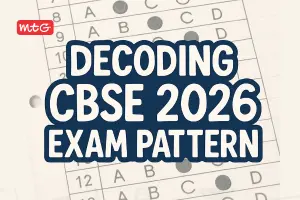
NCERT class 6 mathematics chapter 12 – “Ratio and Proportion” teaches that in many situations, comparison by division makes better sense than comparison by taking the difference. The comparison by division is the Ratio. Students should practice multiple-choice questions (MCQs) to prepare for the objective questions that will be asked in the CBSE exams. For the CBSE exams, practice multiple-choice questions (MCQs) to prepare for the objective questions. We have offered Class 6 MCQ Questions on “Ratio and Proportion” apart from offering comprehensive explanations. On many occasions, CBSE highlighted the role of MCQs as they play a major role in understanding the concepts thoroughly.
MCQs are quite different from subjective questions. Therefore, students should practice and understand how to find right answers in the MCQs. To revise the main concepts, students should practice all the MCQs with answers given. This will assist them in familiarizing with the kinds of questions that might appear in the board exams.
Check complete class 6 Maths MCQ – Class 6 Mathematics MCQs with Answers
Previous – Algebra Class 6 MCQS With Answers
Topics covered in “Ratio and Proportion”
- Ratio
- Proportion
- Unitary Method
Check the updated Syllabus – CBSE Class 6 Maths Syllabus 2024-25
CBSE Class 6 Mathematics Ratio and Proportion MCQs – PDF Download
Answers –
Summary for NCERT class 6 mathematics chapter 12 – “Ratio and Proportion”
- For comparing quantities of the same type, we commonly use the method of taking difference between the quantities.
- In many situations, a more meaningful comparison between quantities is made by using division, i.e. by seeing how many times one quantity is to the other quantity. This method is known as comparison by ratio.
- For comparison by ratio, the two quantities must be in the same unit. If they are not, they should be expressed in the same unit before the ratio is taken.
- The same ratio may occur in different situations.
- The order in which quantities are taken to express their ratio is important.
- A ratio may be treated as a fraction.
- Two ratios are equivalent, if the fractions corresponding to them are equivalent.
- A ratio can be expressed in its lowest form.
- Four quantities are said to be in proportion, if the ratio of the first and the second quantities is equal to the ratio of the third and the fourth quantities.
- The method in which we first find the value of one unit and then the value of the required number of units is known as the unitary method.






























